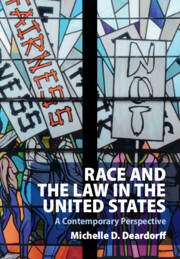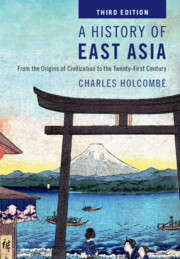Refine search
Actions for selected content:
37953 results in Cambridge Textbooks
Chapter 3 - Plasticity
-
- Book:
- Mechanical Behavior of Materials
- Published online:
- 31 October 2025
- Print publication:
- 22 May 2025, pp 187-285
-
- Chapter
- Export citation
Chapter 6 - Geometry of Deformation and Work-Hardening
-
- Book:
- Mechanical Behavior of Materials
- Published online:
- 31 October 2025
- Print publication:
- 22 May 2025, pp 424-461
-
- Chapter
- Export citation
Chapter 7 - Fracture: Macroscopic Aspects
-
- Book:
- Mechanical Behavior of Materials
- Published online:
- 31 October 2025
- Print publication:
- 22 May 2025, pp 462-531
-
- Chapter
- Export citation
Index
-
- Book:
- Mechanical Behavior of Materials
- Published online:
- 31 October 2025
- Print publication:
- 22 May 2025, pp 959-966
-
- Chapter
- Export citation
3 - Investigating the Brain
-
- Book:
- Neuroscience of Attention
- Published online:
- 02 May 2025
- Print publication:
- 22 May 2025, pp 58-90
-
- Chapter
- Export citation
Chapter 15 - Composite Materials
-
- Book:
- Mechanical Behavior of Materials
- Published online:
- 31 October 2025
- Print publication:
- 22 May 2025, pp 870-920
-
- Chapter
- Export citation

Race and the Law in the United States
- A Contemporary Perspective
-
- Published online:
- 19 May 2025
- Print publication:
- 05 June 2025
-
- Textbook
- Export citation

A History of East Asia
- From the Origins of Civilization to the Twenty-First Century
-
- Published online:
- 15 May 2025
- Print publication:
- 05 June 2025
-
- Textbook
- Export citation
Appendix: - Phonological Symbols and Lexical Sets
-
- Book:
- English Sociolinguistics
- Published online:
- 01 May 2025
- Print publication:
- 15 May 2025, pp 306-306
-
- Chapter
- Export citation
Chapter 9 - The Sociolinguistics of Globalization
-
- Book:
- English Sociolinguistics
- Published online:
- 01 May 2025
- Print publication:
- 15 May 2025, pp 252-271
-
- Chapter
- Export citation
Copyright page
-
- Book:
- English Sociolinguistics
- Published online:
- 01 May 2025
- Print publication:
- 15 May 2025, pp vi-vi
-
- Chapter
- Export citation
Reviews
-
- Book:
- English Sociolinguistics
- Published online:
- 01 May 2025
- Print publication:
- 15 May 2025, pp ii-ii
-
- Chapter
- Export citation
Figures
-
- Book:
- English Sociolinguistics
- Published online:
- 01 May 2025
- Print publication:
- 15 May 2025, pp xi-xii
-
- Chapter
- Export citation
Chapter 1 - English Sociolinguistics: Why It Matters
-
- Book:
- English Sociolinguistics
- Published online:
- 01 May 2025
- Print publication:
- 15 May 2025, pp 1-19
-
- Chapter
- Export citation
Chapter 6 - Interactional Sociolinguistics
-
- Book:
- English Sociolinguistics
- Published online:
- 01 May 2025
- Print publication:
- 15 May 2025, pp 154-186
-
- Chapter
- Export citation
Chapter 4 - English in Contact: From Code-Switching to the Birth of New Varieties
-
- Book:
- English Sociolinguistics
- Published online:
- 01 May 2025
- Print publication:
- 15 May 2025, pp 84-118
-
- Chapter
- Export citation
Acknowledgments
-
- Book:
- English Sociolinguistics
- Published online:
- 01 May 2025
- Print publication:
- 15 May 2025, pp xxiii-xxiv
-
- Chapter
- Export citation
Tables
-
- Book:
- English Sociolinguistics
- Published online:
- 01 May 2025
- Print publication:
- 15 May 2025, pp xiii-xiv
-
- Chapter
- Export citation
Glossary
-
- Book:
- English Sociolinguistics
- Published online:
- 01 May 2025
- Print publication:
- 15 May 2025, pp 307-315
-
- Chapter
- Export citation
References
-
- Book:
- English Sociolinguistics
- Published online:
- 01 May 2025
- Print publication:
- 15 May 2025, pp 316-331
-
- Chapter
- Export citation
